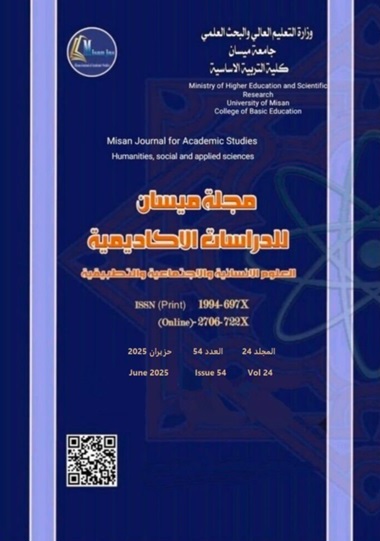Salivary biomarkers of oxidants and antioxidants for chronic renal disease in patients undergoing maintenance hemodialysis
Abstract
The steady decrease in glomerular filtration rate is a hallmark of chronic kidney failure, culminating in elevated serum creatinine concentrations and blood uric nitrogen. Chronic renal failure patients, especially those on hemodialysis, are increasingly diagnosed with oxidative stress. This cross-sectional study sought to estimate oxidative and antioxidative salivary biomarkers (malondialdehyde and catalase) in chronic renal disease patients and compare them to healthy control subjects. This research was performed at Al-Sader Medical City in Al Najaf. There were 60 participants separated into two groups: 30 patients made up the first group, with chronic renal failure, who had hemodialysis. The second group comprised 30 healthy patients with no severe disease in their medical history. It was noted that there were more females than males in this study. The current results indicated a considerable disparity between the MDA value in the control and uncontrolled groups. The MDA value exhibited a greater magnitude in the uncontrolled group. Conversely, the CAT value indicated a statistically significant distinction between the uncontrolled and control groups, with the control group exhibiting a higher CAT value than the uncontrolled group. The primary cause of free radical production and enzymatic antioxidant losses is hemodialysis; this indicates that HD intensifies oxidative stress rather than alleviating it.
Downloads
Copyright (c) 2025 (Humanities, social and applied sciences) Misan Journal of Academic Studies

This work is licensed under a Creative Commons Attribution-NonCommercial-NoDerivatives 4.0 International License.
The copyright is also the copyright of the magazine only.
All articles published in our magazine are subject to license terms
Creative Commons Attribution(CC BY-NC-ND 4.0) This license permits the content to be reproduced, redistributed and reused in whole or in part for any purpose free of charge, without any permission from the author(s), researcher or student.
Works submitted to Maysan Journal of Academic Studies for publication in the journal (CC BY-NC-ND 4.0) license terms. Where available content can be shared, distributed and replicated provided there is no commercial profit and appropriate credit must be given to the original source through sources or citations. It is mandatory to review any material used from other sources including shapes, tables, and images for re-use under the terms of the Creative Commons License (CC BY-NC-ND 4.0).Provided that there is no modification to the original content



